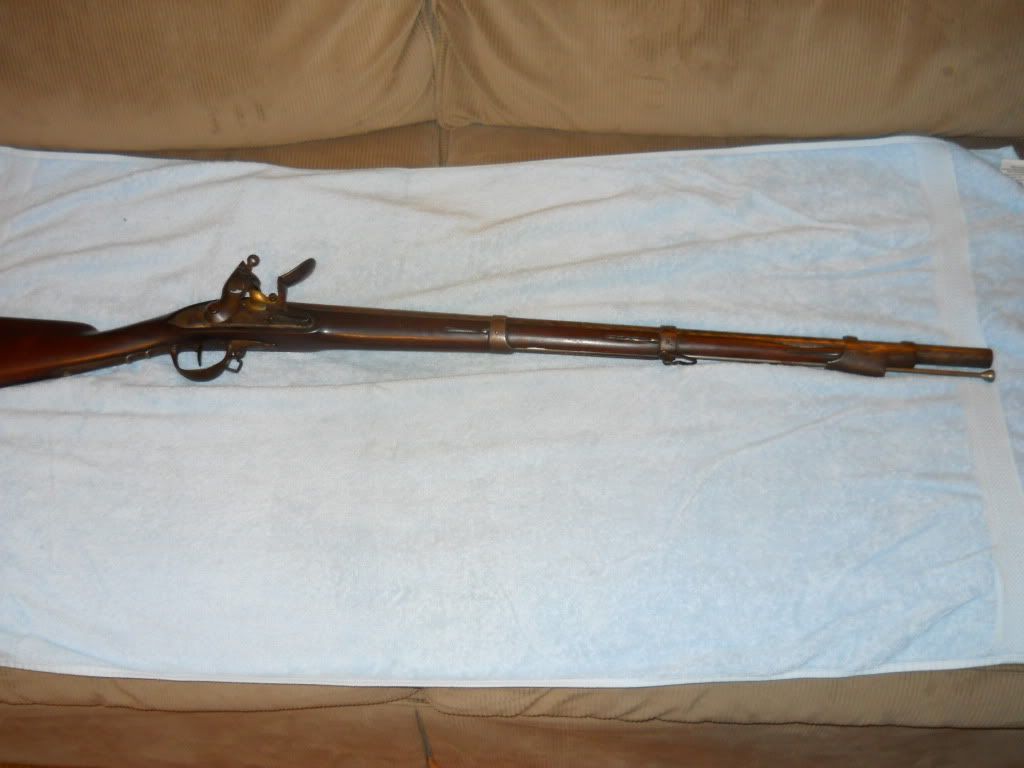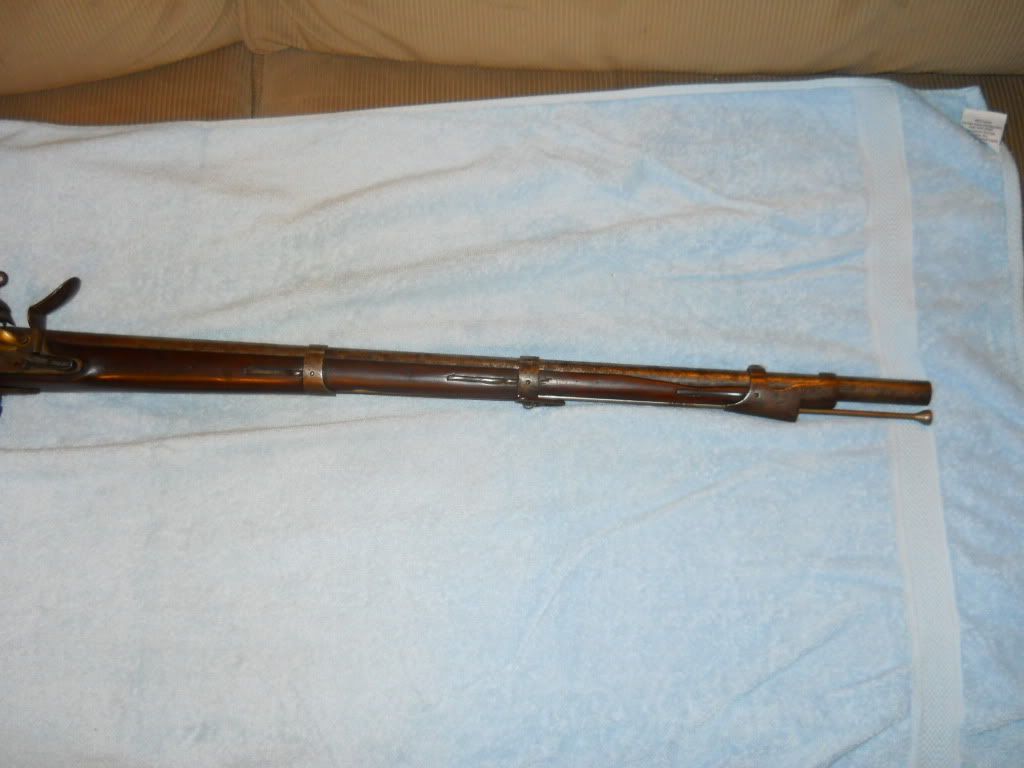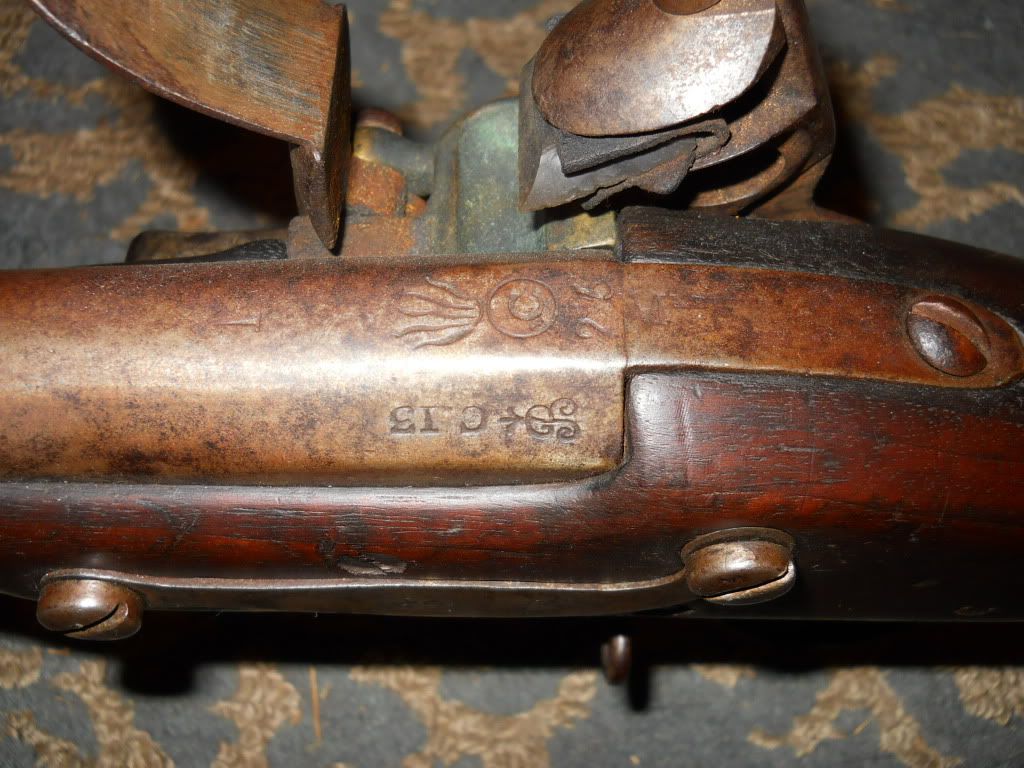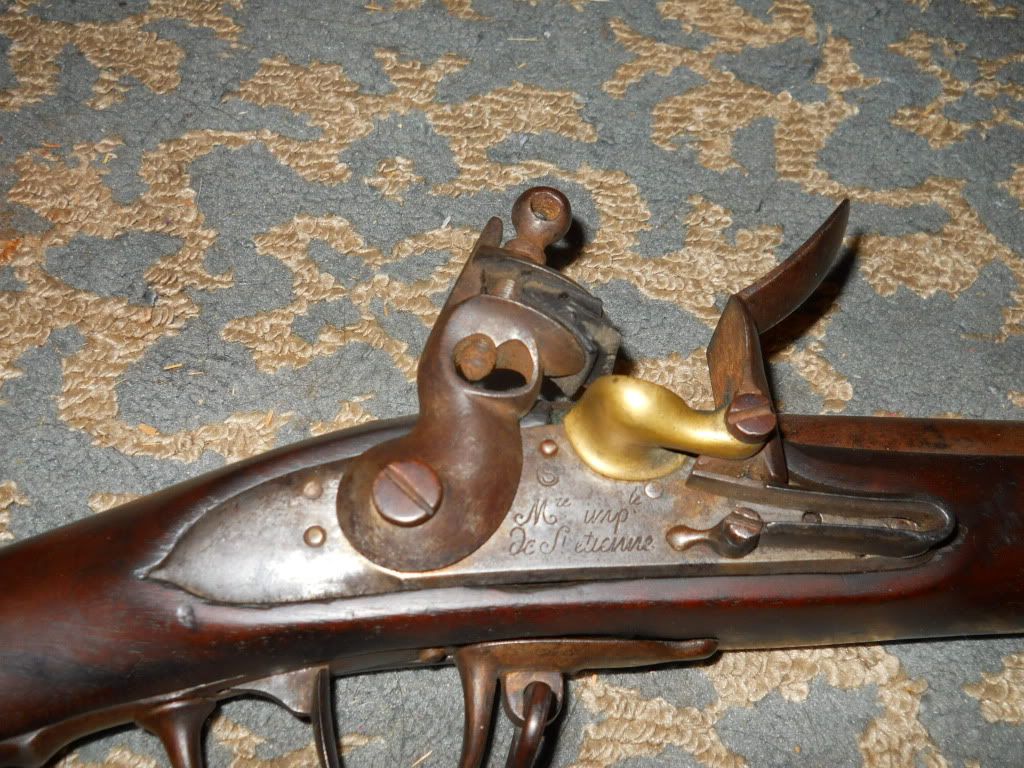albatrosdva
32 Cal.
- Joined
- Dec 27, 2011
- Messages
- 9
- Reaction score
- 0
This is a little bit of an odd ball due to its length. It is a French model 1777 an IX. The stock and barrel have the RF stamp on the plug in the side of the stock and on the side of the barrel beside the touch hole as is normal for the 1777/an IX. The plug started being put in the side of the muskets in 1800. There were a few months when the 1777 an IX did not have the plug. The RF stands for Republique Francaise. In this instance it refers to the French First republic which lasted from 1792 until 1804 when Napoleon took power. The St Etienne lock is clearly marked "Mre Imple de St etienne." The Imple stands form Imperial so it was made during the time of Napoleon, basically 1805-1815. During the early years of Napoleon the RF was commonly still used, so the existance of RF and Imperial markings is not mutually exclusive. The barrel bands are held on with the spring on the left instead of the right. This makes the musket an early one because the 1777/an IX started having the springs on the right side of the bands in 1807. Hence, my musket was made between 1805 and 1807. The barrel is 31 1/2" or 80 cm. It is not cut down but specifically arsenally made at that length with proper spacing between the three barrel bands, which gets lost when one shortens a gun that should be longer. Also there are no filled holes from barrel band springs. It also never had a bayonet lug. This is interesting because it has a flaming bomb insignia on the breech for the grenadiers. The Napoleonic Grenadiers were arguably the best soldiers in the world so it is hard to understand why one of their soldiers would have such a short gun without a bayonet lug. Of course there were horse grenadiers which carried carbines, but this is no normal carbine (that I can find anyway). Your opinions are welcome on the matter. A French arms collector and friend of mine has mentioned the possibility of it being for a drummer boy and that makes sense to me because drummers in those days were young (I think usually between 8 and 14 years old). They would normally attack with their drum so they had no use for a bayonet (not much of a reach for that matter). They would have had a musket for defensive positions as a means of self defense and it would explain why this musket is in such remarkable shape. The bore is absolutely beautiful. If need arose (for which reason I cannot imagine) I would be able to fire this with no fear of safety. It is well marked with the star above C for the St Etienne inspector Coujas on all its metal parts except the lock which has the S mark on the inside and outside. The barrel tang marking is mostly there, only missing the last two digits of Mle 1777. I have no explanation of the two Xs on the side of the stock next to the plug. The inside of the lock is also marked Courbon, which I assume to be the lock maker. I think it is kinda cool how the muskets were stacked so that the screw from the frizzen spring of the adjacent musket imprinted the side of the gun above the side plate. Does anyone have any information on the length of this gun?



 I don't want to take up too much space so if you wish to see additional photos you can go here
I don't want to take up too much space so if you wish to see additional photos you can go here









